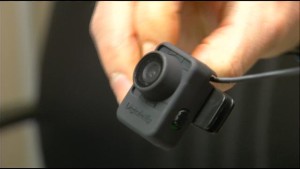Specifically, the software that runs the cameras “may pose a significant vulnerability and security risk to CBP through the availability of Bluetooth capabilities, interactive apps and a lack of adequate security features.” The report also states that streaming video and interfacing with non-CBP-approved devices could pose problems, and the cameras’ signals could be susceptible to hacking. – FCW
US CBP (Customs and Border Protection), badan seperti bea cukai Indonesia menemukan fakta yang cukup mengejutkan bahwa kurangnya perhatian terhadap aspek keamanan membuat “wearable-camera” yang mulai lazim digunakan oleh kepolisian setempat membuka peluang untuk kegiatan hacking.
Artikel terbaru dari The Kaspersky Lab Security News Service, mengungkapkan “wearable-camera” bahkan telah disusupi oleh Conficker worm. Worm ini sendiri sejatinya akan membuat suatu jaringan bot (botnet) dan melakukan kegiatan ilegal lainnya (men-download virus/malware lain, memblokir akses ke anti-virus, dll).
Yang tak kalah menarik dari penemuan disusupinya “wearable-camera” ini dengan Conficker adalah bahwa perusahaan pembuat kamera inipun bahkan tidak mengetahui bahwa kamera yang diproduksinya memiliki “software” yang tertanam di dalamnya.
Jarrett Pavao, pemilik sekaligus presiden dari iPower, perusahaan yang menemukan penyusupan Conficker tersebut mengatakan:
“…as the Internet of Things continues to grow into every device we use in our businesses and home lives each day, it becomes even more important that manufacturers have stringent security protocols,” he said. “If products are being produced in offshore locations, what responsibilities lie with the manufacturer to guarantee our safety?”
Jalan panjang IoT baru saja dimulai.
